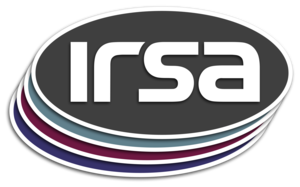The SAGE-SMC pro ject is a Cycle 4 legacy program on the Spitzer Space Telescope, entitled, SAGE-SMC: Surveying the Agents of Galaxy Evolution in the Tidally-Disrupted, Low-Metallicity Small Magellanic Cloud, with Karl Gordon (STScI) as the PI. The project overview and initial results are described in a paper by Gordon et al. (2010, in prep). The SMC was mapped at two different epochs dubbed Epochs 1 and 2 separated by 3 (IRAC) and 9 (MIPS) months, as this provides a 90-degree roll angle in the orientation of the detectors, which optimally removes the striping artifacts in MIPS and artifacts along columns and rows in the IRAC image data. In addition, these two epochs are useful constraints of source variability expected for evolved stars and some young stellar ob jects (YSOs). The IRAC and MIPS observations from the S3MC pathfinder survey of the inner 3 sq. deg. of the SMC (PI: Bolatto, referred to as Epoch 0) have been reduced using the same software.
To be included in each single epoch catalog, each 24 um source has to meet a number of criteria. The source had to be nearly point like with a correlation value >0.89. This removed approximately 2/3 of the entries in the single epoch source lists. In regions where there is a significant structure in the surrounding region (identified as having a sigma > 0.25 in a 120" width square box), the source had to have a correlation value >0.91. This requirement removed a small number of sources (70). Finally, all sources had to have signal-to-noise (S/N) values >5. The S/N used was that estimated from the StarFinder code using the mosaic uncertainty image added in quadrature with an 0.6% error due to the background subtraction. This removed 700 sources. The final Epoch 1 catalog likely has a few remaining unreliable sources, estimated to be at less than the 1% level. The Full List contains ALL sources extracted from the MIPS 24 um mosaics, thus a user should be aware that it contains spurious sources. For more details, see Section 4.1 of the SAGE-SMC Data Delivery Document.
This dataset or service is made available by the Infrared Science Archive (IRSA) at IPAC, which is operated by the California Institute of Technology under contract with the National Aeronautics and Space Administration.




